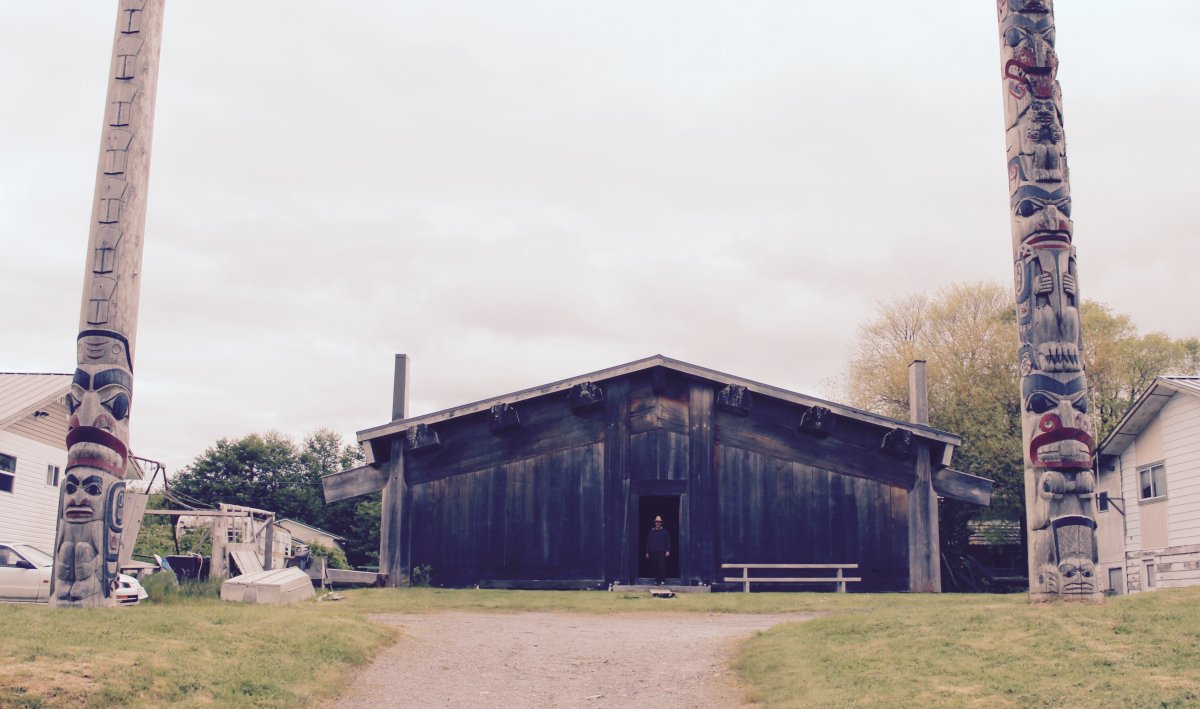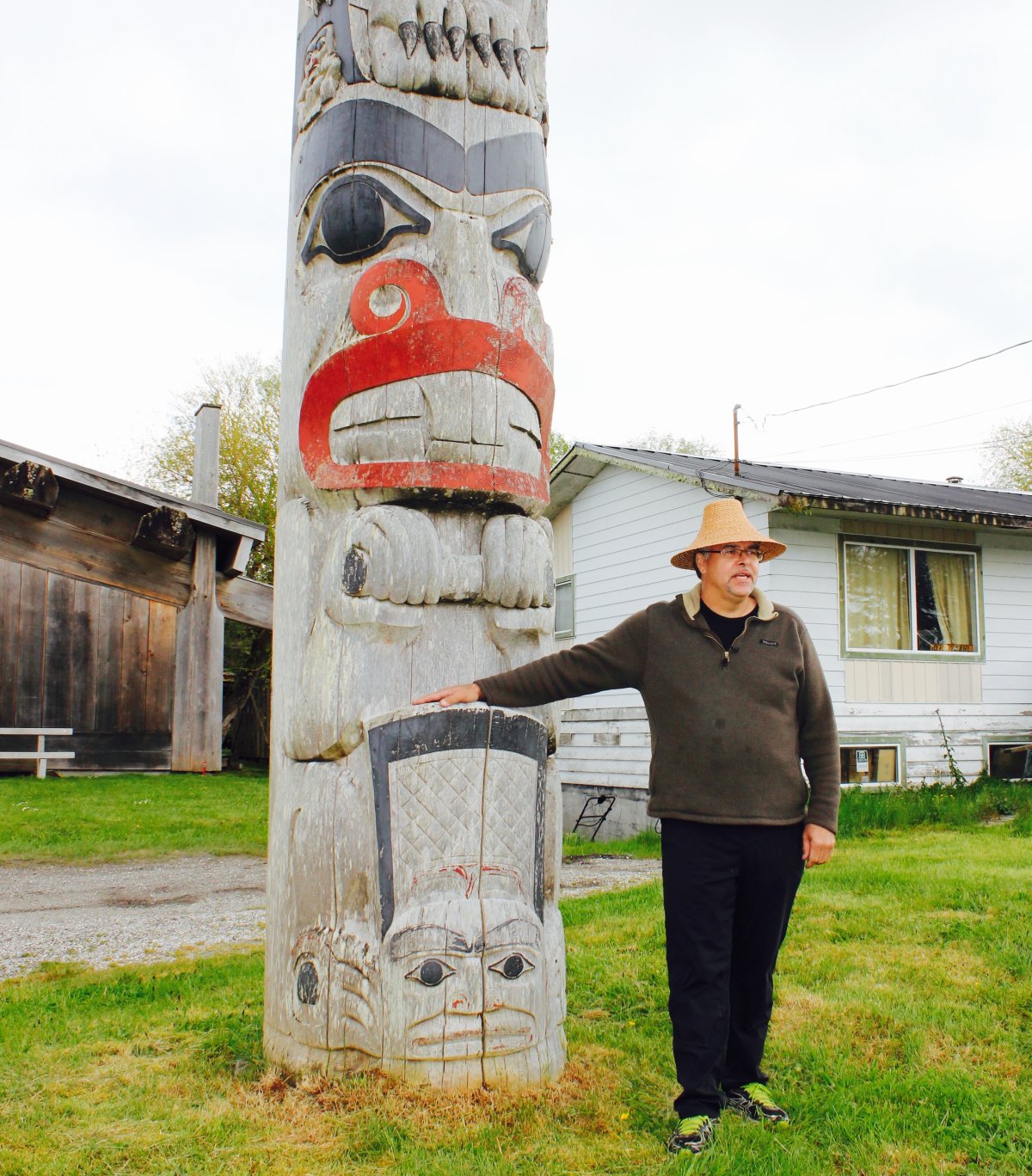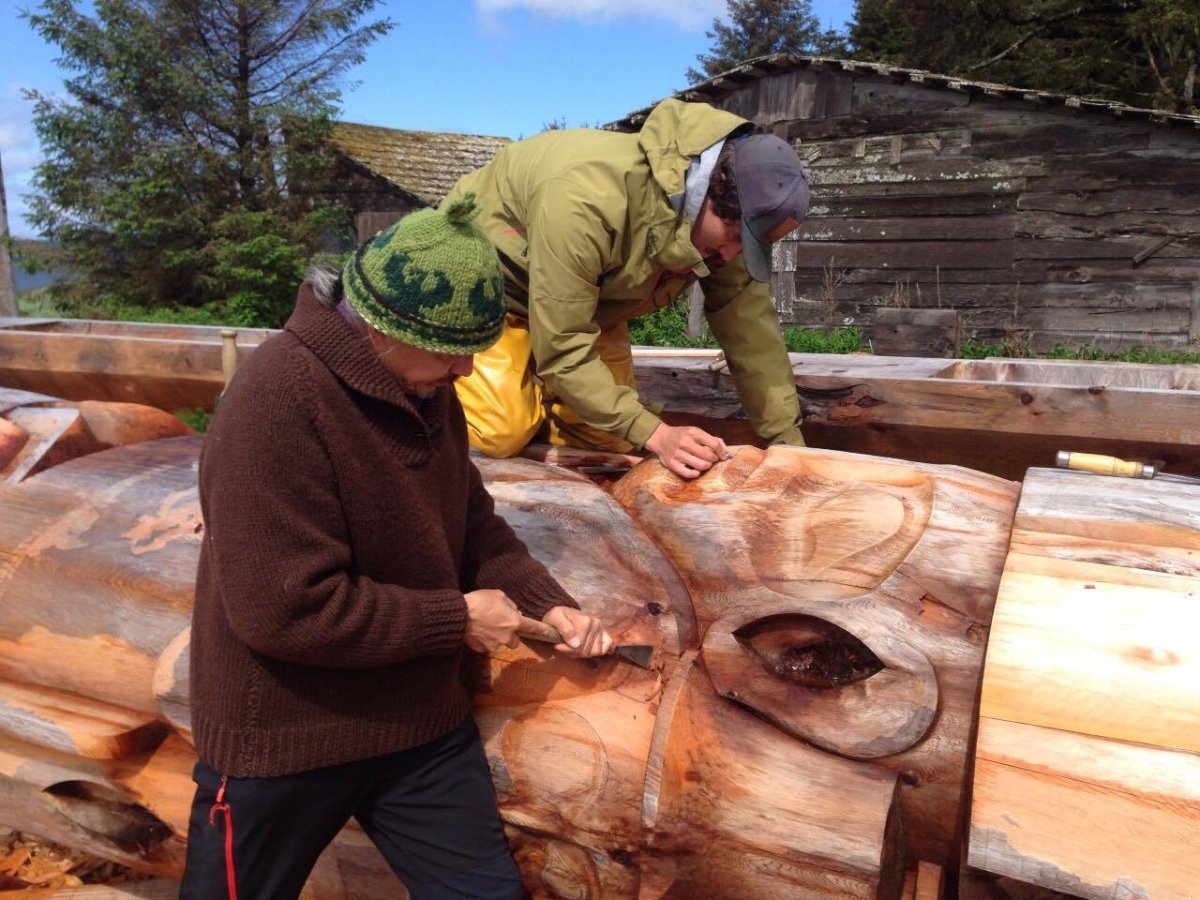For thousands of years, totem poles have been an important part of Haida history.

It’s how Haida people maintain and honour their traditions.
For Haida master carver Christian White, it’s both a history book and an art form. And like with any form of art, it takes inspiration and patience to carve a totem pole that will capture imaginations for many generations to come.
White knows all too well it can be a long and laborious process to imagine, design and carve a totem pole that will not just impress with its intricate artwork, but will also tell a story and invoke images.
“Sometimes I put a piece of paper in front of me and nothing will come,” says White.
“But other days, it just comes to you,” he says. “And then you start thinking about it, and it’s like an obsession for a while.”
PHOTO: Haida artist Christian White working on his new totem pole in his carving shed
At the moment, White is working on a totem that has been sitting in his shed for several years. Although most of it is already painted and carved, it’s still very much a work in progress.
“When you are carving a pole like this, you are carving all night in your mind,” says White. “You can’t wait to get back in here to do the next cut. It’s like being in love.”
White has been carving full-time since he was 15-years old.
He was barely a teenager when he started emulating his father, also a renowned carver.
White says growing up, the raising of every totem always involved a Potlatch, a big community celebration and feast to commemorate the event.
“Those dates are remembered because of those poles being raised,” says White.
PHOTO: Haida artist Christian White stands in front of his totem pole that was raised in front of his longhouse in 1995.
While White’s other carvings are on display in many galleries and fetch tens of thousands of dollars, he started carving totem poles as a way to leave a legacy.
“I’ve been a carver all of my life – for almost 39 years. I realized a few decades ago that to really leave my mark here in Haida Gwaii, I’d have to start carving the totem poles. The totem poles are a way to share with the public. They are our PowerPoint presentations, really. The pole stands there as a monument to an event, that people witnessed and participated in. I can refer to these totem poles to bring stories back to my mind.”
PHOTO GALERY: Inside Christian White’s carving shed
White’s shed is a popular stop on many tourist tours.
Visitors come to watch the master in his element, but for White it’s about more than just showing his art. He says educating people from around the world about his culture and craft is why he lets strangers into his creative commons.
“Just to let them know that we are still here,” says White. “That we are still practicing our traditions.”
He thinks it’s important for people to learn about his totem poles because it’s also part of who they are as human beings.
“I have met people in New York City, who have gone to the Museum of Natural History and seen the Haida totem poles, and they think it’s part of them. I have been to the Pitt Rivers Museum in Oxford, where the people there think that totem poles are part of their life story also. In Vancouver, totems have been part of the history of Stanley Park for many decades. People see them and they think they are part of their own culture.”
“So they are coming here looking for an answer too, I guess,” says White. “They want to see it living, thriving and carrying on.”
PHOTO: Haida artist Christian White stands inside his longhouse in the village of Old Massett
Just a few houses away from White’s carving shed, his cousin, Jim Hart, is working on a very different kind of totem pole.
What Hart is carving is a way to move forward.
The so-called “reconciliation” totem pole tells the story of thousands of Aboriginal children that went through Canada’s residential school system.
PHOTOS: Reconciliation totem pole being carved in the village of Old Massett
The report by Canada’s Truth and Reconciliation Commission released last year found residential schools were created for the purpose of separating Aboriginal children from their families, in order to minimize and weaken family ties and cultural linkages.
After hearing from more than 6,000 witnesses, most of whom survived the experience of living in the schools as students, the commission also found that Aboriginal children were abused, physically and sexually, and died in the schools in numbers that would not have been tolerated in any school system anywhere in the country, or in the world.
READ MORE: Truth and Reconciliation Commission’s report details atrocities of residential schools
For Hart, the residential schools are also part of his personal history.
The residential school he carved onto the reconciliation totem is modelled after the one his grandfather went to, along with his grand uncles and aunts.
But while the memories of the residential school era are still fresh, Hart says the reconciliation totem is about working together and looking forward to the future.
“We’ve got to get past that,” says Hart. “We are starting to get past it with the younger people. Once that happens, we will have to teach our youngsters about this part of our history. But we are still in it. We are still dealing with this.”
Also depicted on the totem are two boats, representing the essence of reconciliation in Hart’s eyes.
“We are moving together – in separate boats, but still moving forward,” he says.
The reconciliation totem will be capped off with an eagle sitting at the top, about to take off, representing future and hope.
It’s expected the pole will be shipped to Vancouver and raised somewhere on the Lower Mainland by the end of September.







































Comments